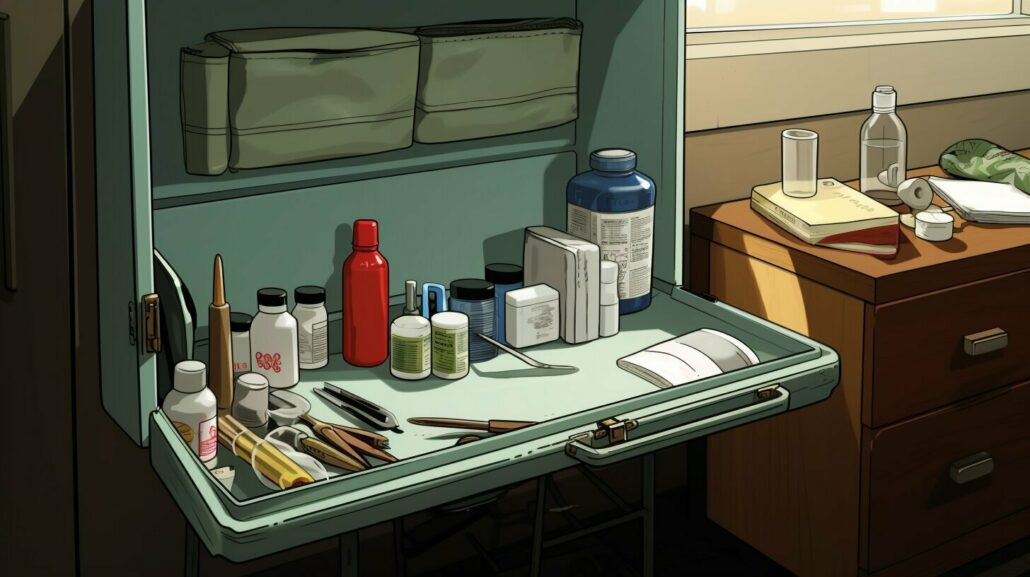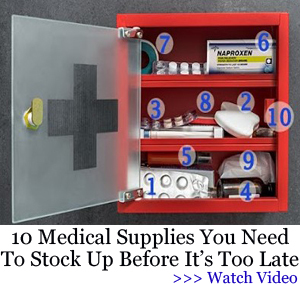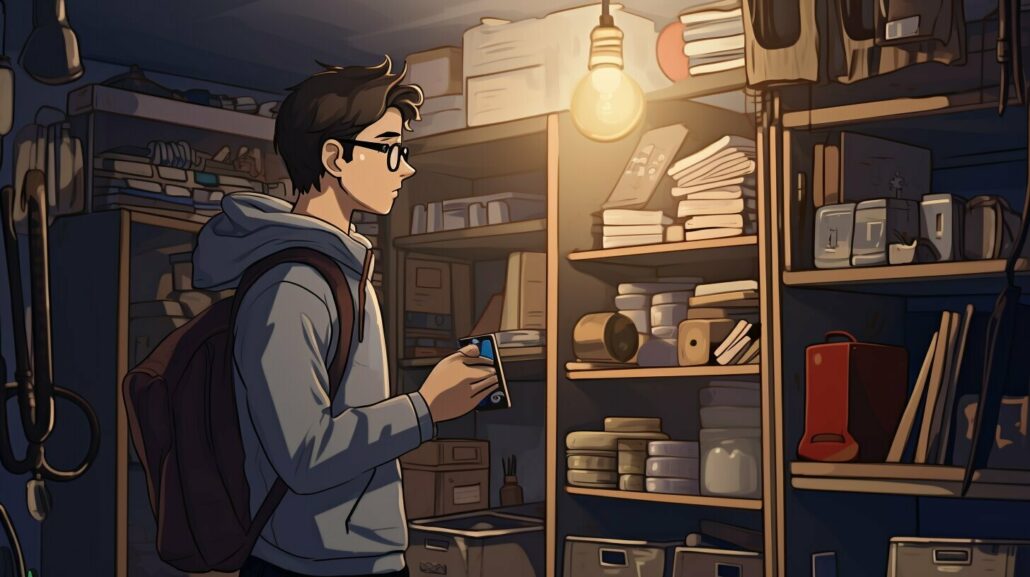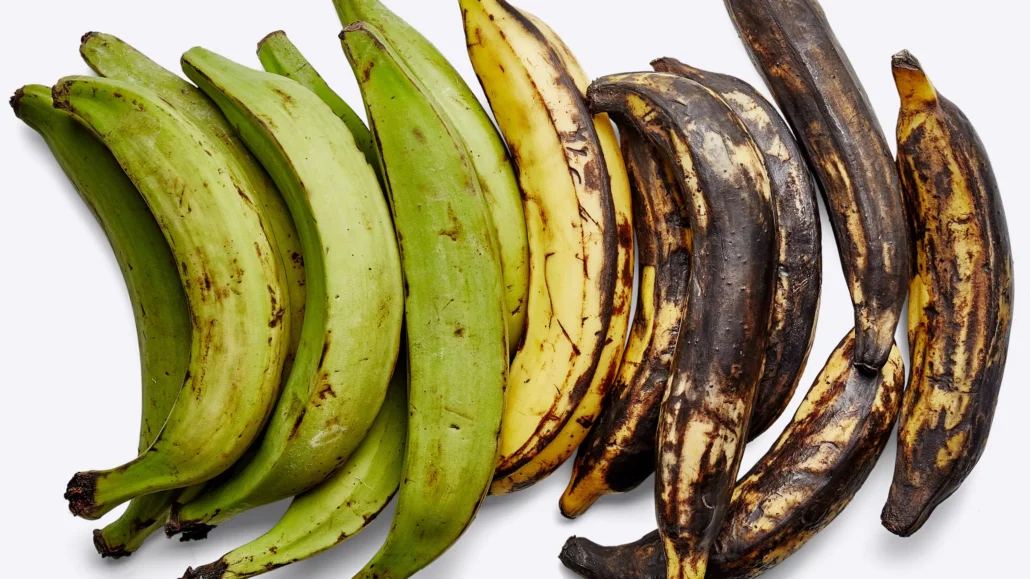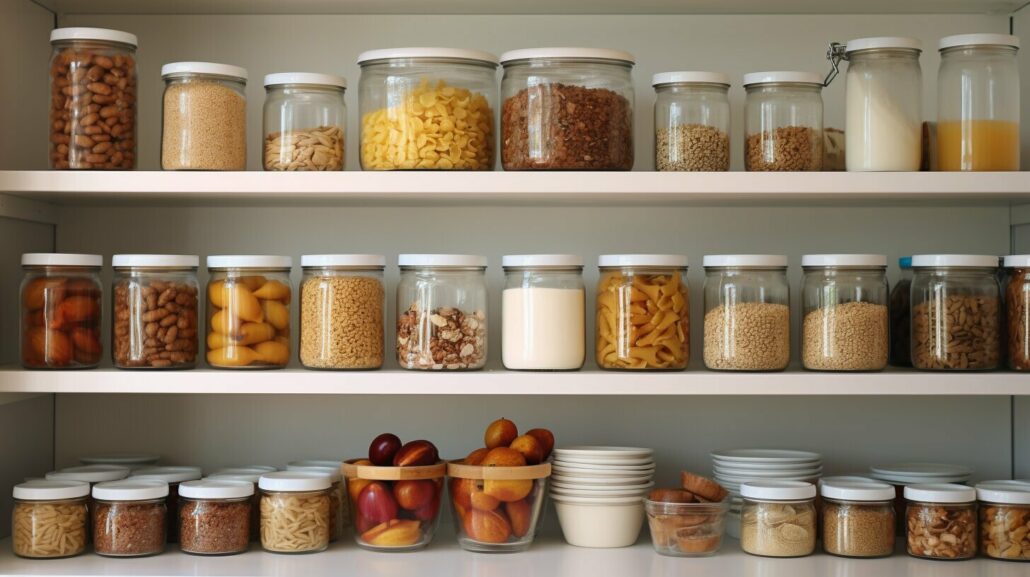Preparing for medical emergencies is crucial for everyone’s safety and well-being. It’s important to have a stockpile of medical supplies that can help you and your loved ones during unexpected situations. In this guide, we will provide you with all the information you need to know about prepping medical supplies. From the basics of building a stockpile to storing and accessing your supplies, we’ve got you covered. Stay informed and prepared to ensure your family’s safety.
Key Takeaways:
- Start with a smaller individual first aid kit and gradually add more supplies to your medical stockpile.
- Organize your supplies into categories such as general, diagnostics, medications, and more.
- Include other essential preparedness items like clean water, light sources, and fire-making tools.
- Regularly check and rotate your stockpile, replacing expired items.
- Store your medical supplies in a cool, dark place that is easily accessible.
When it comes to prepping medical supplies, it’s important to start with the basics and gradually build your stockpile. One of the essential items to have is a well-stocked first aid kit. This kit should include items such as adhesive bandages, antiseptic ointment, medical tape, and scissors. It’s also a good idea to have a thermometer, gloves, and tweezers.
But what other supplies should you consider for your medical stockpile? To help you organize your supplies effectively, it’s recommended to categorize them into different sections. Here are some categories to consider: general supplies (like bandages and gauze), diagnostics (such as a blood pressure monitor), medications (both over-the-counter and prescription), bone and joint care (for sprains and fractures), cuts and soft tissue care (like wound dressings and steri-strips), burns and blisters care (including burn creams and blister pads), dental care (toothbrushes and toothpaste), and feminine and pregnancy-related supplies (sanitary pads and prenatal vitamins).
In addition to medical supplies, it’s important to have other preparedness items on hand. These include clean water, a hands-free light source, soap, hand sanitizer, a fire-making tool, a cooking method, wool blankets, and more. These items can be essential during emergencies and ensure your overall safety and well-being.
To maintain the effectiveness of your medical supplies, it’s crucial to regularly check and rotate your stockpile. Replace any expired items and ensure proper storage conditions. Store your supplies in a cool, dark place in an easily accessible container. This way, you can easily access them when needed.
Building a stockpile of medical supplies doesn’t have to break the bank. You can start small and gradually add supplies over time to accommodate budget constraints. By taking small steps towards preparedness, you can ensure the safety and well-being of yourself and your loved ones during emergencies.

In conclusion, prepping medical supplies is a crucial step towards ensuring your safety and well-being during emergencies. Remember to start with the basics by creating a well-stocked first aid kit. Categorize your supplies and consider other preparedness items such as clean water and blankets. Regularly check and rotate your stockpile to maintain its effectiveness. And don’t forget, you can build your stockpile gradually to accommodate your budget. Stay prepared, stay safe.
Essential Categories for Your Medical Supplies Stockpile
To ensure comprehensive emergency preparedness, it’s crucial to include essential categories in your medical supplies stockpile. Having a well-rounded stockpile allows you to be prepared for a variety of situations and provide the necessary care when it matters most. Here are the key categories you should consider:
| Category | Examples |
|---|---|
| General Supplies | Bandages, sterile dressings, adhesive tape, scissors, tweezers |
| Diagnostics | Thermometer, blood pressure monitor, glucose meter |
| Medications | Pain relievers, antihistamines, antibiotics |
| Bone and Joint Care | Splints, braces, instant cold packs |
| Cuts and Soft Tissue | Antiseptic ointment, sterile gauze pads, wound closure strips |
| Burns and Blisters | Burn gel, non-adhesive dressings, blister cushions |
| Dental Care | Toothpaste, toothbrushes, dental floss, oral analgesics |
| Feminine and Pregnancy | Sanitary pads, pregnancy tests, prenatal vitamins |
These categories cover a wide range of medical needs, ensuring that you have the necessary supplies to handle different emergencies. It’s important to stock up on items specific to your family’s needs, taking into consideration any pre-existing conditions or special requirements.
Remember, building a comprehensive medical supplies stockpile is a process that can be done gradually. Start with the essentials and gradually expand your collection as you become more familiar with your family’s specific needs. Regularly check and rotate your supplies, replacing expired items, and keep them stored in a cool, dark place for optimal effectiveness.
By following these guidelines and including these essential categories in your medical supplies stockpile, you can have peace of mind knowing that you are well-prepared to provide the necessary care during emergencies.
Other Important Preparedness Items
In addition to medical supplies, there are other crucial items to include in your emergency preparedness plan. These items can help ensure your safety and well-being during a crisis. Here are some essential items to consider:
- Clean water: Water is vital for survival, so it’s important to have a sufficient supply. Store enough water for each person in your household to last at least three days.
- Hands-free light source: A reliable flashlight or headlamp can provide much-needed illumination in the dark. Consider including extra batteries or a rechargeable option.
- Soap and hand sanitizer: Proper hygiene is crucial, especially during emergencies. Stock up on antibacterial soap and hand sanitizer to keep your hands clean and prevent the spread of germs.
- Fire-making tool: Having a way to start a fire can be essential for warmth, cooking, and sterilizing water. Include items such as waterproof matches, lighters, or a fire starter kit.
- Cooking method: Consider alternative cooking methods in case of power outages or limited resources. Portable stoves, camping cookware, and fuel can be valuable additions to your emergency supplies.
- Wool blankets: Staying warm is crucial during emergencies, especially if heating systems are compromised. Wool blankets provide excellent insulation even when wet.
It’s important to remember that every household’s needs may differ, so customize your emergency preparedness plan accordingly. Take into account specific medical conditions, dietary restrictions, and the number of people in your household. Regularly review and update your stockpile to ensure your supplies are not expired or damaged.
| Water | Light Source | Hygiene | Fire-Making | Cooking Method | Insulation |
|---|---|---|---|---|---|
| Store enough water for each person in your household | Include a reliable flashlight or headlamp with extra batteries | Stock up on antibacterial soap and hand sanitizer | Have waterproof matches, lighters, or a fire starter kit | Consider portable stoves, camping cookware, and fuel | Include wool blankets for insulation even when wet |
By being prepared with these essential items, you can better navigate through emergencies and ensure the safety and well-being of yourself and your loved ones.
“Being prepared means being equipped with the proper supplies and having a plan in place.”
Checking and Rotating Your Medical Supplies Stockpile
Regularly checking and rotating your medical supplies stockpile is an essential aspect of emergency preparedness. It ensures that you have reliable and up-to-date supplies when you need them the most. Checking your stockpile regularly allows you to identify and replace expired items, keeping your supplies effective and safe to use.
To make the process of checking and rotating easier, it is recommended to create a checklist of all the items in your stockpile. This way, you can keep track of what needs to be replenished or replaced. Remember to include categories such as general supplies, diagnostics, medications, bone and joint care, cuts and soft tissue, burns and blisters, dental care, and feminine and pregnancy-related supplies.

Once you have your checklist, set a schedule to review and update your stockpile regularly. This can be monthly, quarterly, or biannually, depending on your preferences and the size of your stockpile. During your review, check the expiration dates of medications and other perishable items. Replace any expired items and ensure that all supplies are properly stored to maintain their effectiveness.
| Category | Number of Items | Expiration Date |
|---|---|---|
| General Supplies | 12 | 2023-06-30 |
| Diagnostics | 6 | 2024-02-15 |
| Medications | 20 | 2024-01-10 |
| Bone and Joint Care | 8 | 2023-12-18 |
| Cuts and Soft Tissue | 10 | 2024-03-22 |
| Burns and Blisters | 4 | 2023-11-05 |
| Dental Care | 6 | 2023-09-28 |
| Feminine and Pregnancy | 16 | 2022-08-11 |
Remember to store your medical supplies in a cool, dark place in an easily accessible container. This ensures that the supplies are protected from light, heat, and moisture, which can degrade their quality. Additionally, by keeping your stockpile organized and well-maintained, you can quickly locate the items you need during an emergency, saving valuable time.
Regularly checking and rotating your medical supplies stockpile may seem like an additional task, but it is a crucial part of being prepared for any medical emergency. By keeping your supplies up-to-date and properly stored, you can ensure the health and safety of yourself and your loved ones during challenging times.
Proper Storage and Access of Your Medical Supplies Stockpile
Proper storage and easy access to your medical supplies stockpile are critical for quick response during emergencies. To ensure the effectiveness of your supplies, it is important to store them in a cool and dark place. Exposing medical supplies to heat and light can compromise their quality and lifespan. Consider storing them in a designated container that is easily accessible, allowing you to quickly locate and retrieve the necessary items when needed.
In addition to storage, organization plays a crucial role in maintaining a well-managed stockpile. Categorize your medical supplies into different sections to easily identify and access specific items during emergencies. You may consider using labeled containers or dividers to separate the supplies into categories such as general, diagnostics, medications, bone and joint care, cuts and soft tissue, burns and blisters, dental care, and feminine and pregnancy-related supplies.
To further enhance your preparedness, it is important to regularly check and rotate your medical supplies stockpile. Periodically review the expiration dates of medications and other perishable items. Replace any expired or damaged supplies promptly to ensure that your stockpile remains reliable and up to date. By maintaining a well-maintained and up-to-date stockpile, you can be confident in your ability to respond effectively during emergency situations.
Table 1: Categorization of Medical Supplies
| Category | Examples |
|---|---|
| General Supplies | Gloves, masks, scissors, tweezers |
| Diagnostics | Thermometer, blood pressure monitor, stethoscope |
| Medications | Pain relievers, antihistamines, antibiotics |
| Bone and Joint Care | Ice packs, splints, compression bandages |
| Cuts and Soft Tissue | Bandages, adhesive tape, antiseptic solution |
| Burns and Blisters | Burn dressings, burn ointment, blister pads |
| Dental Care | Toothache gel, dental floss, temporary filling |
| Feminine and Pregnancy | Sanitary pads, pregnancy tests, prenatal vitamins |
Building a comprehensive medical supplies stockpile takes time and effort. If budget constraints are a concern, remember that it is possible to gradually build your stockpile over time. Start with the essentials and expand as you have the means to do so. Remember, being prepared is an ongoing process, and regular updates to your stockpile will ensure that you are always ready to handle any medical emergency.
Building a Budget-Friendly Medical Supplies Stockpile
Building a comprehensive medical supplies stockpile doesn’t have to break the bank – it can be done gradually and within your budget. When it comes to disaster preparedness supplies, it’s important to prioritize your needs and invest in items that will provide the most value for your money. By following a strategic approach, you can ensure that you have the necessary supplies without compromising your financial stability.
One way to build your stockpile on a budget is to start with a smaller individual first aid kit for your home. This kit should include essential items like bandages, antiseptic wipes, pain relievers, and adhesive tape. As you build your stockpile, consider adding supplies that cover common medical problems, such as medications for allergies, cold and flu, and gastrointestinal issues. Organizing your supplies into categories, such as general, diagnostics, and different types of injuries, can help you effectively manage and access them when needed.
| Category | Items |
|---|---|
| General | Bandages, gauze, adhesive tape |
| Diagnostics | Thermometer, blood pressure monitor |
| Medications | Pain relievers, antihistamines, antacids |
| Bone and Joint | Splints, elastic wraps |
| Cuts and Soft Tissue | Antiseptic ointment, sterile dressings |
| Burns and Blisters | Burn gel, blister pads |
| Dental Care | Toothbrush, toothpaste, dental floss |
| Feminine and Pregnancy | Sanitary pads, pregnancy tests |
In addition to medical supplies, there are other important preparedness items that should be considered. Clean water is essential for hydration and sanitation, so investing in a water purification system or water storage containers is crucial. A hands-free light source, soap, hand sanitizer, a fire-making tool, a cooking method, and wool blankets are also essential items to have in your stockpile.
To ensure the effectiveness of your stockpile, it’s important to regularly check and rotate your supplies. Replace expired items and make sure everything is stored in a cool, dark place to maintain their shelf life. By gradually building your stockpile over time, you can distribute your expenses and make it more manageable within your budget constraints.

Why Regular Preparedness is Essential
Regularly maintaining and replenishing your medical supplies is crucial for ongoing emergency preparedness. Being prepared for unexpected situations ensures that you have the necessary resources to handle medical emergencies and provide immediate care to yourself and your loved ones.
One way to maintain preparedness is to start with a smaller individual first aid kit and gradually add more supplies to your stockpile. Begin by focusing on the essentials, such as bandages, antiseptics, and over-the-counter medications. As you expand your stockpile, consider categorizing your supplies to make them easy to locate during an emergency. This could include organizing items into categories like general supplies, diagnostics, medications, and specialized care for bone and joint injuries, cuts and soft tissue wounds, burns and blisters, dental emergencies, and feminine and pregnancy-related needs.
In addition to medical supplies, it’s important to consider other items that can enhance your emergency preparedness. Clean water is essential for hygiene and hydration. A hands-free light source, like a headlamp, can assist in providing illumination during medical procedures. Basic hygiene items such as soap and hand sanitizer help prevent the spread of infections. A fire-making tool and a cooking method allow you to prepare food and stay warm in emergency situations. And wool blankets provide insulation and comfort. Adding these items to your stockpile ensures you are well-equipped for a range of emergency scenarios.
Table: Essential Categories for a Medical Supplies Stockpile
| Category | Examples |
|---|---|
| General Supplies | Bandages, gauze, adhesive tape, scissors, gloves |
| Diagnostics | Thermometer, blood pressure monitor, glucose meter |
| Medications | Pain relievers, antihistamines, antacids |
| Bone and Joint Care | Splints, braces, ice packs |
| Cuts and Soft Tissue | Disinfectants, wound closure strips, non-stick dressings |
| Burns and Blisters | Burn ointment, gel dressings, blister cushions |
| Dental Care | Toothache relief, temporary dental filling material |
| Feminine and Pregnancy | Sanitary pads, pregnancy tests, prenatal vitamins |
Regularly checking and rotating your stockpile is essential to ensure the effectiveness of your medical supplies. Expired items should be replaced promptly, and storage conditions should be maintained to preserve the integrity of the supplies. Remember to store your stockpile in a cool, dark place, away from direct sunlight and extreme temperatures. Always keep your medical supplies in an easily accessible container, allowing you to quickly retrieve them when needed.
Building a budget-friendly stockpile is possible by gradually adding supplies over time. Start with the essentials and prioritize based on your family’s needs and budget constraints. Building a stockpile is not a one-time task; it requires ongoing dedication and commitment to ensure your preparedness remains up-to-date and effective.
The Importance of Practicing First Aid Skills
Alongside a well-stocked medical supplies stockpile, it is essential to develop first aid skills to effectively respond to emergencies. Being equipped with the necessary supplies is just the first step; knowing how to use them correctly can make all the difference in saving lives and reducing the severity of injuries.
First aid skills are invaluable in situations where medical help may not be immediately available. Whether it’s treating a minor cut or administering CPR, having the knowledge and confidence to act quickly can greatly improve outcomes. By learning first aid techniques, we can become our own first responders and provide immediate care until professional help arrives.
There are various resources available for learning first aid skills, from online courses to local training centers. These courses cover a wide range of topics, including CPR, wound care, splinting, and choking relief. By participating in these courses, we can gain the confidence and competence needed to handle medical emergencies with calmness and clarity.
Benefits of Practicing First Aid Skills
- Immediate response: When an emergency occurs, every second counts. By knowing first aid, we can provide immediate care to minimize further harm or complications.
- Life-saving potential: Simple actions like performing CPR or controlling bleeding can save lives, especially in critical situations where professional help may take time to arrive.
- Reduced severity of injuries: Proper first aid can prevent injuries from worsening and reduce the risk of long-term complications.
- Empowerment: Being prepared and having the skills to help others in need can instill a sense of empowerment and community responsibility.
- Peace of mind: Knowing first aid gives us the peace of mind that we are equipped to handle emergencies and protect ourselves, our loved ones, and even strangers if the need arises.
Remember that practicing first aid skills is an ongoing process. It’s important to refresh and reinforce our knowledge regularly to ensure we are prepared for any situation. So, alongside building your medical supplies stockpile, invest time in learning and practicing first aid skills. Together, let’s be prepared, knowledgeable, and ready to make a difference when it matters most.
| Benefits of Practicing First Aid Skills |
|---|
| Immediate response |
| Life-saving potential |
| Reduced severity of injuries |
| Empowerment |
| Peace of mind |
Additional Resources for Medical Emergency Preparedness
In addition to building a medical supplies stockpile, there are various resources available to further enhance your medical emergency preparedness. These resources can provide valuable information, guidance, and training to help you navigate emergency situations and ensure the safety and well-being of yourself and your loved ones.

One valuable resource is reputable websites that specialize in emergency preparedness and medical supplies. These websites often offer detailed information on various topics such as first aid techniques, medical supplies recommendations, and emergency response protocols. Some popular websites include the American Red Cross (redcross.org) and the Centers for Disease Control and Prevention (CDC) (cdc.gov).
Another helpful resource is first aid manuals. These manuals provide step-by-step instructions on how to administer first aid in different situations, from minor injuries to life-threatening emergencies. Having a first aid manual on hand can serve as a quick reference guide when faced with an unfamiliar medical situation.
| Resource | Website |
|---|---|
| American Red Cross | redcross.org |
| Centers for Disease Control and Prevention (CDC) | cdc.gov |
Additionally, attending first aid courses can be an excellent way to enhance your knowledge and skills. These courses are often offered by organizations such as the American Red Cross and local community centers. Through hands-on training and simulations, you can learn how to handle various medical emergencies and gain confidence in using the supplies in your stockpile.
Remember, being prepared goes beyond just having the right medical supplies. Educating yourself and staying informed on emergency response techniques can make a significant difference when minutes matter the most. By utilizing these additional resources, you can take proactive steps towards ensuring the safety and well-being of yourself and those around you in times of crisis.
Final Thoughts on Prepping Medical Supplies
Prepping medical supplies is a vital step towards safeguarding your family’s well-being during unexpected emergencies. By having a well-stocked and organized supply of essential medical items, you can ensure that you are prepared to handle any medical situation that may arise.
It is recommended to start with a smaller individual first aid kit, gradually adding supplies as needed. This allows you to cover common medical problems and ensures that you have the necessary tools and medications readily available. Remember to organize your supplies into categories such as general, diagnostics, medications, bone and joint care, cuts and soft tissue, burns and blisters, dental care, and feminine and pregnancy-related supplies.
In addition to medical supplies, it is important to consider other preparedness items that can complement your stockpile. Clean water, a hands-free light source, soap, hand sanitizer, a fire-making tool, a cooking method, wool blankets, and other items can prove invaluable during emergency situations.
Regularly checking and rotating your stockpile is essential to ensure that all items are within their expiration dates and in proper working condition. Replace any expired items and store the stockpile in a cool, dark place that is easily accessible. This will help maintain the effectiveness of the supplies when they are needed most.
Building a medical supplies stockpile does not have to be done all at once. It is possible to build it gradually, accommodating your budget constraints. By adding a few items each month, you can steadily expand your stockpile and ensure that you are always prepared for any medical emergency.
Take the time to practice first aid skills and become confident in using the supplies in your stockpile. Consider taking a first aid course to enhance your knowledge and abilities. Additionally, utilize additional resources such as reputable websites and first aid manuals to further educate yourself in medical emergency preparedness.
Remember, the safety and well-being of your family should always be a top priority. Prepping medical supplies is a proactive step that allows you to be ready for any situation. Stay informed, stay prepared, and stay safe.
FAQ
Q: Why is preparing a stockpile of medical supplies important?
A: Preparing a stockpile of medical supplies is essential for staying prepared in emergency situations. It ensures that you have the necessary supplies to treat injuries or illnesses when access to healthcare may be limited or unavailable.
Q: Where should I start when building my medical supplies stockpile?
A: It is recommended to start with a smaller individual first aid kit to keep at home before adding more supplies. This allows you to have basic medical supplies readily available for common problems.
Q: What categories should I consider when organizing my medical supplies stockpile?
A: Your medical supplies stockpile should cover categories such as general supplies, diagnostics, medications, bone and joint care, cuts and soft tissue, burns and blisters, dental care, and feminine and pregnancy-related supplies.
Q: What other important preparedness items should I have in addition to medical supplies?
A: In addition to medical supplies, it is important to have other preparedness items such as clean water, a hands-free light source, soap, hand sanitizer, a fire-making tool, a cooking method, wool blankets, and more.
Q: How often should I check and rotate my medical supplies stockpile?
A: It is advised to check and rotate your medical supplies stockpile regularly to ensure the effectiveness and replace expired items. This helps to maintain the quality and functionality of the supplies.
Q: Where should I store my medical supplies stockpile?
A: Your medical supplies stockpile should be stored in a cool, dark place in an easy-to-access container. This helps to preserve the integrity of the supplies and ensures they are readily available in times of need.
Q: What can I do if I have budget constraints when building my medical supplies stockpile?
A: If you have budget constraints, you can build your medical supplies stockpile gradually over time. This allows you to acquire supplies as your budget allows and ensures you are still making progress towards being prepared.
Q: Why is regular preparedness important when it comes to medical supplies?
A: Regular preparedness is important because it ensures that your medical supplies are up-to-date and ready for use. Updating and replenishing supplies on a regular basis ensures they are effective when needed.
Q: How important is it to practice first aid skills?
A: Practicing first aid skills is crucial to effectively use the supplies in your medical supplies stockpile. Taking first aid courses and practicing regularly helps build confidence and ensures you can provide proper care during emergencies.
Q: Are there any additional resources available for medical emergency preparedness?
A: Yes, there are additional resources available for medical emergency preparedness. You can access reputable websites, first aid manuals, and other educational materials to enhance your knowledge and preparedness.
Q: Any final thoughts on prepping medical supplies?
A: Prepping medical supplies is a crucial step in staying prepared for emergencies. It is important to take action and ensure you have the necessary supplies to protect yourself and your loved ones during unexpected situations.

